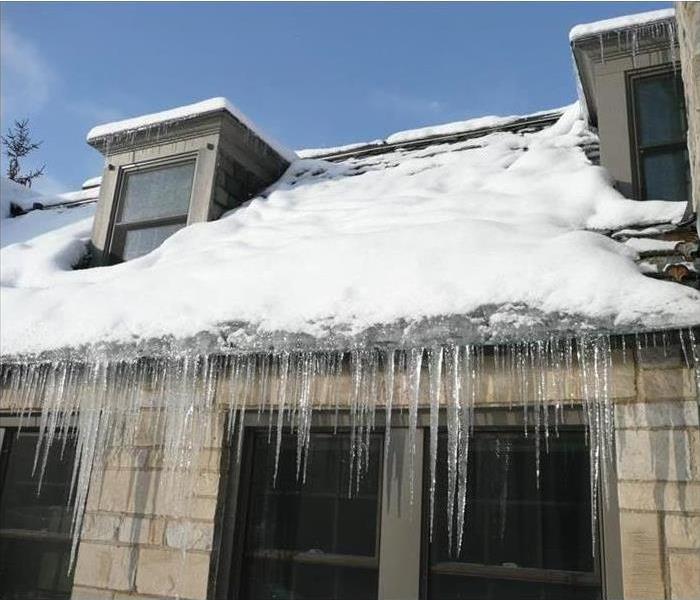How to Prevent Ice Dams on your home
12/21/2017 (Permalink)
An ice dam is a problem of house and building maintenance on sloping roofs in cold climates. Ice dams on roofs form when accumulated snow on a sloping roof melts and flows down the roof, under the insulating blanket of snow, until it reaches below freezing temperature air, typically at the eaves. When the melted water reaches the freezing air, ice accumulates, forming a dam, and snow that melts later cannot drain properly through the dam.] Ice dams may result in leaks through the roofing material, possibly resulting in damaged ceilings, walls, roof structure and insulation, damage or injury when the ice dam falls off or from attempts to remove ice dams.
The melting of roof snow comes from two reasons: Heat from inadequate roof insulation and heat leaks, and inadequate ventilation. This condition is called a warm roof and the heat conducted through the roof melts snow on those areas of the roof that are above heated living spaces, but the snow does not melt on roof overhangs. Also, a small amount of ice damming can occur from the normal freeze- thaw cycle melts snow on warm or sunny days.
The key to preventing ice dams is to keep your attic and roof cold. After a snowfall, a cold roof will have a thick blanket of snow. A warmer roof, however, will soon have clear spots where the snow has melted off, and may well have icicles hanging from the eaves.
To keep your roof cold, follow these three steps:
- Stop warm air from reaching your attic and roof. This typically stems from air leaks through your ceiling into your attic. Most of that comes from air leaks caused by gaps in the drywall, cracks around light fixtures, unblocked walls, plumbing pipes, chimneys, and access hatches. These can be hard to fix but can be done through the attic by plugging leaks with foam and caulk.
- Go into your attic and check the depth of your attic insulation. Building codes require about 12 to 14 in. of fiberglass or cellulose. Add more if you have less than 8 in and have had ice dam problems in the past.
- Attic ventilation draws in cold outdoor air and flushes out warmer attic air, cooling the attic and the roof in the process. If you don’t have enough ventilation in your attic this could be causing ice dams and you might want to look into adding come ventilation vents.






 24/7 Emergency Service
24/7 Emergency Service
